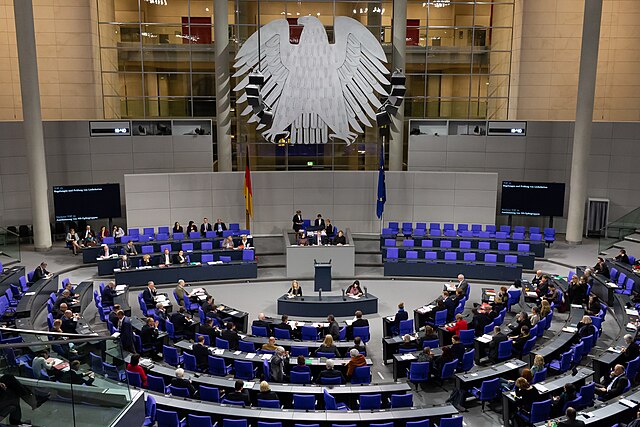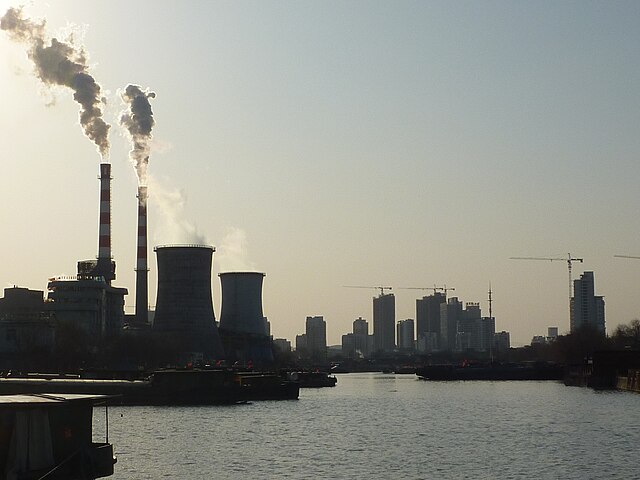In the 2022 elections, political parties are called upon to set out their vision on climate change. The development of new gas infrastructure is closely linked to climate policy. Providing a short-term answer to the Russian crisis cannot mean ducking an explanation of how to reconcile this emergency response with the energy transition.
Not doing so – and building on the consensus of those who are fed up with Italy’s immobility and in favour of new infrastructure no matter what – will in fact multiply the costs, especially in the gas sector.
The state-controlled gas system operator SNAM has already bought two LNG terminals for over €700 million. The value of the gas will have to be added on top for the duration of the contracts signed with the new suppliers. Yet, if the energy transition goals are met, renewables will replace over 80% of current Russian imports by 2035.
The current simple “yes or no” question around LNG terminals is anything but a meaningful political conversation. Politicians need to explain how these new infrastructures are in line with decarbonisation goals and expected gas demand, and what is it that they plan to do with the new infrastructure, contracts and business relations with new suppliers in the future, particularly in the event that supplies from Russia do not cease and resume as a substantial element of a peace agreement in Europe and until the goals of RepowerEU are met.
Does new gas infrastructure imply delaying the development of renewables? Even if not, who should pay for the risk of infrastructure redundancy – shareholders, taxpayers or consumers? Or are we planning to export gas to Europe in the next decade, as if Germany does not have the same or more ambitious goals than Italy? What guarantees are there that the gas infrastructure is the most effective option to manage the crisis with respect to the timing and development of alternatives?
Even in terms of filling the gas storages, nobody seems to be taking care of the economic risk for consumers. There is a massive state intervention to purchase gas on international platforms at very high prices, for which market operators would not take responsibility, financed through a €4 billion loan from the Italian Treasury to one of its subsidiaries, the Gestore dei Servizi Energetici (Gse), which in coordination with SNAM manages the operation. As such, the loan does not affect (for now) public finance but will at some point become debt for consumers and taxpayers.
Never go shopping when hungry, dieticians teach
Perhaps we should also take this into account in the energy and infrastructure sectors more generally.
The risk of a not-thought-through reaction to the energy price crisis in terms of size, length, and lack of attention to the costs of those actions is likely to hurt as much or more than prices already do.
The same applies to the decision, also rash and at great risk of self-defeat, to invest in a European and Italian system that no longer relies on Russian gas on a permanent basis. How credible is it that we will decide tomorrow – perhaps when the international situation has normalised – to close the gas taps that neither Europe nor most of its member states have had the courage or the interest to do so to date, not even in the wake of the shock of the invasion of Ukraine?
Yet it is on this very assumption that we are building our energy security response with all its costs and risks.
It is one thing to diversify away from Russian gas by accelerating the development of renewables and energy efficiency, which are measures that are in any case necessary to achieve the new European decarbonisation targets. The investment value of such measures – besides helping to reduce dependence on Russian gas in the short term – remains high in a scenario consistent with the EU long-term strategy; it is quite another to develop new gas infrastructure that, on the contrary, will be made redundant in the coming years by decarbonisation policies.
Related Articles: Are the G7 Countries Sabotaging Their Own Climate Efforts? | European Gas Crisis: Pressing Questions Answered
The two Floating Storage Regasification Units (FSRUs) that SNAM has purchased will arrive, according to the Italian government, when the next critical winter will be over. The purchase took place in the absence of any public information on how these infrastructures will be managed and paid for: will they be considered a network and paid for in the tariffs? Will they be handed over to third-party operators to manage? Will they be financed directly with taxes?
What is certain is that the law establishes a public guarantee fund for any losses by SNAM and a fast track for the authorisation of the necessary works.
If an infrastructure is made and paid for to last decades, the assumption is that it will have a long prospect of use. However, it is difficult to assume this for new FSRUs. Firstly, because Italy is committed to substantially phase out the use of gas for electricity production by 2035 (which today is worth about one third of consumption) as per this year’s G7 commitment.
Secondly, because Italy has set a 2030 target for electricity renewable penetration of over 70%, even though the energy industry considers over 80% feasible at this point. These policies mean a reduction in the use of gas for electricity from a minimum of 15 billion cubic metres (bcm) per year to around 25 bcm, the latter being comparable to the entire pre-crisis gas import from Russia.
This trend is complemented by policies to make buildings more efficient and to electrify heating and heat production systems, as well as the development of biogas that will not need ports.
In June 2022, consumption of gas for residential and industrial use was down by almost 10% compared to June 2021. If it were not for the exceptional drought, and the consequent unavailability of hydropower, the trend in gas reduction would already exceed what the EU demands according to the new gas savings plan approved at the end of July.
All this in a context of redundant import capacity via pipelines. Only the Trans-Adriatic Pipeline (TAP) connecting Italy to Albania now operates at full capacity among the total pipeline capacity in Italy. And since Italy is now part of highly interconnected European gas infrastructure, the real goal here of current Italian policy is to tap into the European gas market, rather than to meet the Italian energy security goals.
This is however a reckless and costly investment for Italy’s pocket.
Italy therefore risks making costly investments without any economic assessment. By implementing European policies to 2030, gas demand is expected to fall by 30-40% compared to today. Instead, there is no sign of public criteria to assess new infrastructure or stress-test against alternatives nor any government concern about the efficiency of spending.
Little should reassure us that floating LNG terminals can be removed and resold, because the economic damage of reselling an asset when its usefulness has diminished will be unavoidable. It is interesting to note that the German government has also acquired LNG plants, but has done so by leasing them, not buying them.
In addition to the sunk costs of physical assets that may soon prove to be redundant, there is the cost of long-term commercial agreements that the government claims to have undertaken (in its own name or on behalf of state-controlled companies? By guaranteeing their compliance with public resources?). Are there exit clauses from these agreements if the crisis is resolved — and will it be resolved if Italy and Europe do what is agreed in the REPowerEU? How much impact do these clauses have in terms of risk for taxpayers and energy customers?
Unfortunately, risks do not end here. There is something even worse, which is beyond the wisdom of the dietician. Wrong and redundant infrastructures risk fueling and prolonging policies that are not compatible with climate action.
In fact, it is not inconceivable that in a few years, when the time comes to admit that the two FSRUs moored at Piombino and Ravenna ports will no longer be needed, those who have an interest in their operation – or even just to avoid being politically embarrassed by their decommissioning – will successfully lobby for the gas economy to continue. And in so doing, they will damage the climate and delay the transition to an energy system freed from price volatility and the insecurity of fossil fuels.
In order to mitigate these risks, it is necessary – as far as possible – to review the strict decisions already taken, and to reconsider those that are ongoing in light of climate policies and goals. Now that the LNG terminals have been purchased, it is necessary to clarify their regime of use as transparently as possible, and to accelerate their integration into SNAM’s development plans in order to assess, albeit belatedly, their usefulness according to existing governance processes. This could also mean halting the installation of the second ship in Piombino, if the energy regulator’s (ARERA) and the government’s assessments are negative.
Any assessments of gas infrastructure cannot disregard consistency with climate policies. An aspect to which “the Draghi agenda” has not given the necessary priority, and which should now be reconsidered by its supporters and the future Italian Government.
Editor’s Note: The opinions expressed here by the authors are their own, not those of Impakter.com — In the Featured Photo: An LNG terminal. Featured Photo Credit: Wikimedia Commons.














